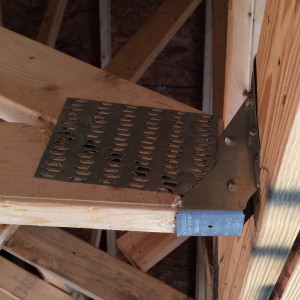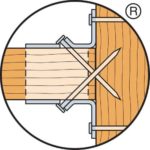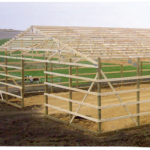
Have you ever seen this famous sign? You may have seen it while riding the London Underground, to draw attention to the gap between the rail station platform and the train door. The warning phrase is so popular that you may also recognize it from souvenir T-shirts or coffee mugs.
In the connector world, the phrase comes to mind when thinking of the space, or “gap” between the end of the carried member and the face of the carrying member. Industry standards for testing require that a 1/8” gap be present when constructing the test setup (in order to prohibit testing with no gap, where friction between members could contribute significantly), so this is the gap size that is typically permitted for the joist hangers listed in our catalog.
Gaps exceeding 1/8” can affect hanger performance in several ways. A larger gap creates more rotation for the connector to resist by moving the downward force further from the header. Fasteners may also have reduced or no penetration into the carried member due to the gap. Testing confirms that these factors decrease hanger allowable loads for larger gaps.

What are my options then if the field conditions create a gap larger than 1/8”? We have performed testing to establish allowable loads for many common joist and truss hangers with gaps up to 3/8” (up to ½” for HTU hangers), as well as testing for possible field remedies and repair scenarios. Our technical bulletin T-C-HANGERGAP18 provides this information, along with a design example, and general recommendations and guidelines for preventing gaps. Notes on shim details are also included – shim size, material, and attachment (independent of the hanger fasteners) are key design considerations that must be covered by the engineer or truss designer.
What is your experience dealing with hangers that exceed 1/8” gaps? Let us know in the comments below.





